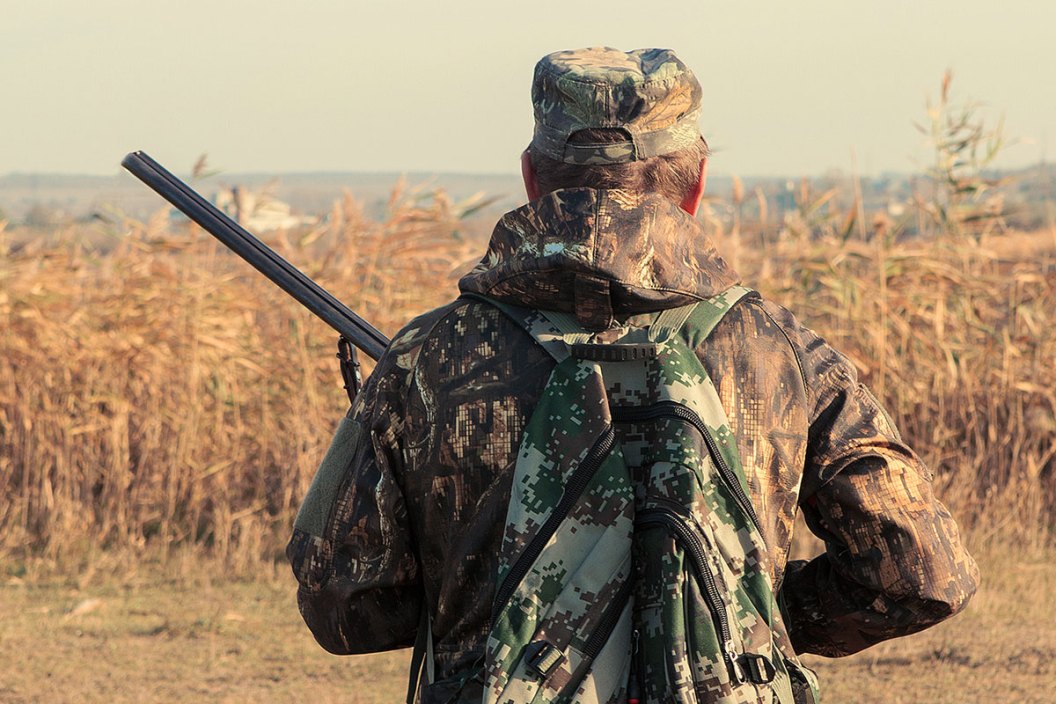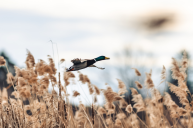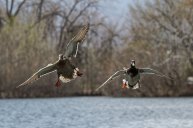You just don't do this stuff when you go out duck hunting.
Duck hunters across the nation have differing opinions about what constitutes bad form, and even poor sportsmanship, during a given waterfowl season. The fact is, if you want to see success and have a good time while practicing good sportsman ethics, certain things are just not acceptable when it comes to waterfowl hunting.
There will be disagreements on what methods work best, what decoy spreads to use (a classic argument starter), what shot size prevails, or which shotgun choke performs best. But really, there aren't many arguments to be made about a group of actions we've come to call "the don'ts of wingshooting."
Even a waterfowl hunting guide can let some things slip, but firearm safety and waterfowl identification had better be the order of the day in the blind or the flooded timber. That goes without saying, but there are more no-nos to avoid.
Whether you are setting up in hunting areas in the Atlantic Flyway, the Mississippi Flyway, the Central Flyway, or the Pacific Flyway, it always matters how you carry yourself in the blind or in the boat. Possession limits aside, everyone who uses their hunting license to target migratory birds in North America has a responsibility to uphold.
Even with other types of hunting, there will always be differences in opinion and preference. But during duck season, the endless combination of variables make each occurrence unique. If there are things we can and should all agree are bad, these are them.
Shooting Birds On the Water

They call it a "sitting duck" for a reason.
This can create the biggest argument of all, but I was taught never to shoot at a sitting bird unless it was already wounded. There are those out there that consider a swimming bird fair game and so be it, but they coined the phrase "wingshooting" for a reason.
Many veteran hunters in the Midwest shoot at grouse that are walking or sitting in trees because that's how they're hunted in that region, but a duck or goose walking through a cut corn field? Those should be considered off limits.
There's little to no challenge involved, and you're doing your hunting heritage a disservice.
Skybusting
When you're hunting over large bodies of water, ducks sometimes take on the "side mirror effect," appearing much closer than they really are. This is often what leads to hunters taking overly long shots.
There shouldn't be much argument over this style among the seasoned duck hunting fraternity, but we've all been there when someone has done it right next to us.
This doesn't always mean shooting straight up in the air, but when you can't even tell the mallard drakes from the hens, they might just be a bit too far away.
Challenging the Weather
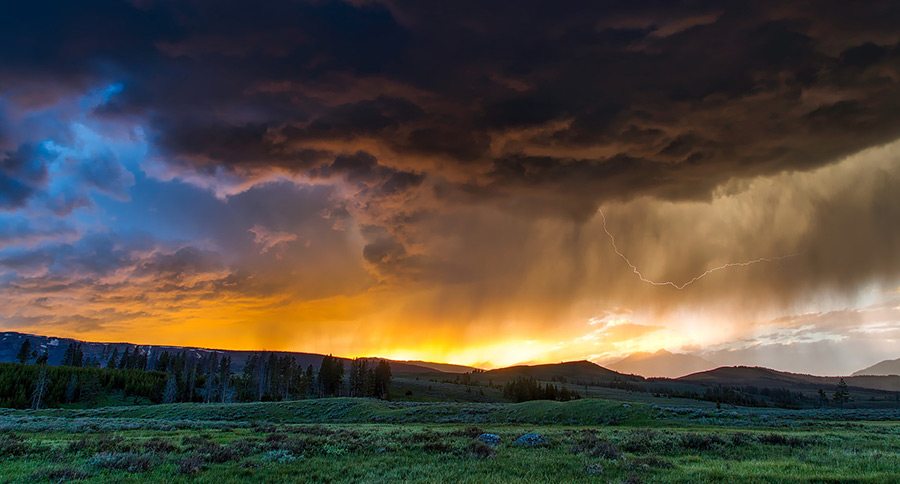
Weather conditions can play a big part of a goose or a duck hunter's safety. Whether it is a nasty, vicious wind or risky ice that has to be crossed to be hunted, waterfowl hunters need to recognize the danger and identify when it is unsafe to be on the water.
In the long run, most waterfowlers don't usually get on the water when it's late in the year and the it's entirely too rough to be out, but it seems like we still hear about incidents every year.
Crossing Over Your Partner
Without getting too deep into it, this basic rule of firearm safety may seem to be obvious, but when the birds are dumping in as they're working over the decoys, it can be easy to get caught up and forget that the person next to you has that side covered.
If your firearm crosses over the line of sight of the hunter next to you, you've gone too far. Whether you are hunting from pit blinds, layout blinds, or box blinds, wild ducks in range have a way of swinging in and out of your shooting area. That can make a hunter have tunnel vision and forget his boundaries. Don't fall victim to that.
Failure to Take Turns Shooting
When everyone jumps at every chance to shoot, how do you know who shot which bird?
Even with just two men in the blind, my friends and I always discuss this possibility to help avoid confusion. This is much more important when you're group hunting with three or more people.
Maybe you and your friends just don't care, but for the rest of us: we all want to know that it was us who dropped the duck or goose laying there, and it also helps to know whether or not we missed and why.
Flock Shooting
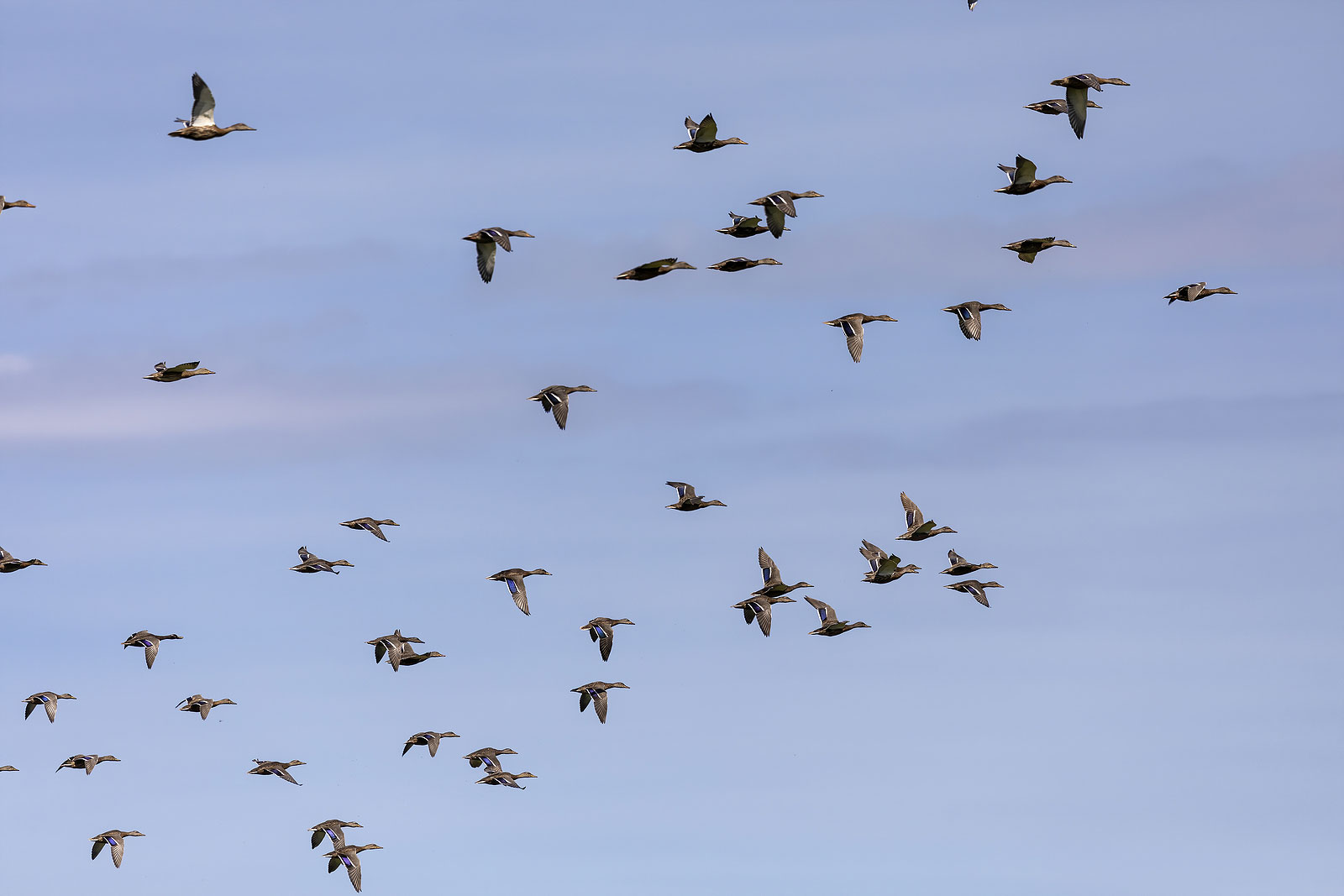
We see this so often that we've begun to wonder why it still happens.
With today's firearms, shot loads, and choke systems, we are shooting the most powerful choices of ammunition as we ever have, but the fact remains that the punt guns of yesteryear were banned for a reason.
You don't want to strike down an entire flock of birds in one pass, so why would you even try? When a blind full of men or women shoot so many shots at one big flock, there will be birds that get wounded, mortally or not, and will probably die a not-so-quick death.
Realize how lucky you are to have so many birds above you, enjoy it, and then shoot for the edges and stragglers.
When it comes to waterfowl hunting, duck hunters know that there are a lot of choices out there, good and bad. Everyone who has ever loaded up with non-toxic shot and climbed into a blind well before dawn has learned to do it their own way based upon those who raised them.
From the southern swamps to the pothole primaries and beyond, there's a lot more to being a successful duck hunter the just being able to say that you shot your gun.
These are the lessons learned from a lifetime of waterfowl hunting based on my own experiences in the blind and in the field, taught to me by the men in my life that were the foundation of how I began to hunt.
That's why I obey the rules; do you follow them too?
Looking for a little more or even hot lunch for your hunting blind? Follow my webpage, or on Facebook and Twitter
NEXT: FUTURE DUCK HUNTING PRO KNOWS HIS WATERFOWL ID BETTER THAN YOU
WATCH
